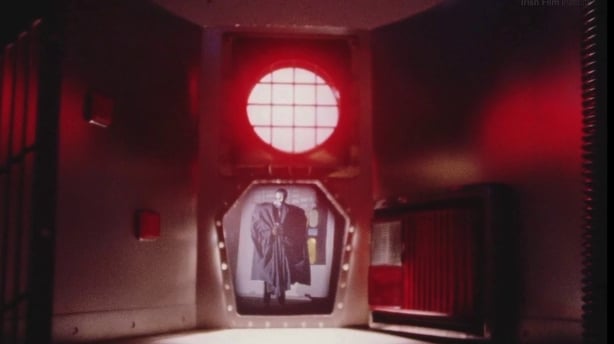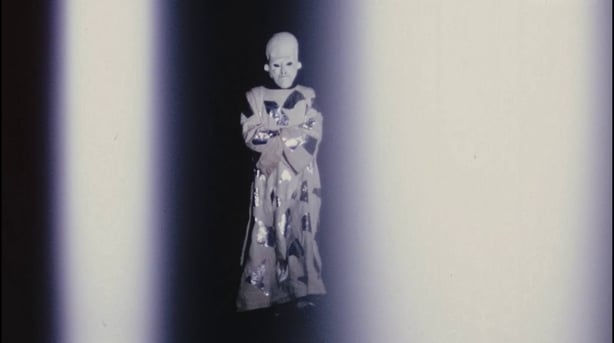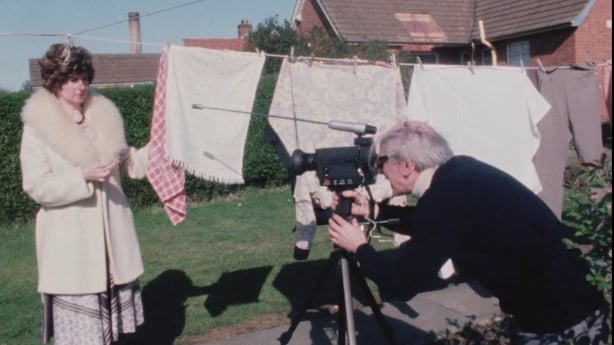Dean Kavanagh writes about one of the true cult heroes of Irish film, director Roy Spence, whose films are now available to watch via the IFI Player.
Born in 1944 in County Down, Roy Spence was set on a path to become a school teacher just like his twin brother Noel. From an early age, the brothers were interested in cinema as well as American fashion and culture and as young cinephiles, the Spence brothers spent their youth at their local cinemas, in particular the Tudor cinema in Bangor, watching science-fiction B-movies of the 1950s.

Spence was immediately enamoured with the work of filmmakers such as Ed Wood and of course Roger Corman, all of whom became influential on his filmmaking. The Spence brothers embarked on their journey into film, establishing their production company Gothic Films, with Roy in the role of director, special effects creator and set-designer, and Noel as an assistant.
Spence’s filmography classifies as fantasy, horror, science-fiction and documentary. In the 1970s, he built his house and private film studio out of sight surrounded by a small forest in his hometown. Spence’s output was remarkably out-of-sync with Irish and British cinema of that time, and even more so with the tumultuous political history of that period in Northern Ireland; in his studio, he sat winding 16mm film and developing martian prosthetics, transforming the place into a gothic graveyard or a massive spacecraft. Also an accomplished documentarian, his non-fiction works depict local craftsmen or processes that interested him, such as basket weaving, blacksmithing and dairy production.

During the 1970s, Spence’s work was distributed mostly via small film clubs and independent collectives, his work making strong impressions with their twisted tales and accomplished special effects. His work often appeared in Movie Maker, a popular magazine dedicated to small and medium gauge filmmaking, and he was awarded a total of ten of the magazine’s ‘Top Ten’ awards throughout his career, reaching first place three times.
A true independent spirit and a sheer joy of making moving pictures permeates every frame of his work. The popular trends of the time were ‘relatable’ drama or social satire and though Roy’s films charmed and bewildered audiences with their homemade special effects and wry humour, they were still oddities. He was not one to shy away from depicting the struggles of creating films with such a limited means, or indeed getting people to take part in the creation and viewing of the work. In Attack of the Saucer People (1981) an amateur filmmaker tries desperately to rile his film club compadres into making a short film. Throughout the narrative he is beset with every known production disaster and is eventually abducted by aliens. The acerbic humour doesn’t end there, for when his film club find the abandoned material (featuring the abduction) they remark that it looks crude and fake. In Roy’s cinema, the film director is never let off the hook.
After a number of years the interest in Spence’s filmmaking waned as the demand for works with a more socio political engagement came to the fore. When his films were no longer being exhibited he decided to build his own cinema to screen them. Roy and Noel Spence built the Tudor cinema theatre, a temple dedicated to screening the films they love. It was constructed like a Frankenstein’s monster using artefacts of the now defunct cinema theatres of their youth. They then built another private cinema theatre on Roy’s property called The Excelsior, named after the Excelsior mine in It Came From Outer Space (1953). Both of these cinemas are living museums showcasing true Art Deco furnishings of the period, replete with original edition film posters and other historic design works.
In the 1990s Spence continued to make films which granted him a small degree of local popularity. The reputation of the Tudor cinema grew and soon both Roy and Noel were entertaining many special guests including Ray Harryhausen and Sara Karloff, who became a friend and frequent visitor. Younger generations with an interest in genre films began to flock to the Tudor and the Excelsior. Even indie rock group the Two Door Cinema Club took their namesake as a malapropism of Noel’s Tudor cinema.

For the past fifty years Spence has been active on the outermost periphery of the film industry in Ireland; he never received any state funding to support his art and has never had his work theatrically released. Since the mid-1990s, he has collaborated with local schools, theatre groups and youth groups utilising his trademark practical effects while editing new collaborative shorts entirely on video. He has created over a dozen films with emerging amateurs, and over the past decade there has been a renewed interest in his work with his films now considered to be national heritage.
The Roy Spence Collection is now available to the public, free of charge, through the IFI’s online platform, the IFI Player, and via the free IFI Player suite of apps developed by Irish tech company Axonista, and available to download from Google Play, the App store, Amazon TV, Android TV and Roku.
Dean Kavanagh is a filmmaker living and working in Ireland. A full version of this article is available on the IFI website.

